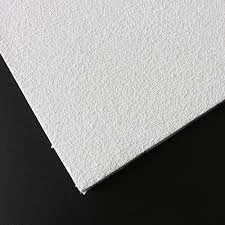Nov . 23, 2024 17:21 Back to list
suspended ceiling grid and tiles
Understanding Suspended Ceiling Grid and Tiles Enhancing Aesthetic and Functionality
In the realm of modern architecture and interior design, suspended ceilings have gained significant popularity due to their versatility, aesthetic appeal, and functional benefits. Often referred to as drop ceilings, these structures consist of a grid system that supports lightweight ceiling tiles. They have become a staple in commercial buildings, offices, and homes alike, redefining the suspension of common ceiling challenges and creating opportunities for creative design.
The Structure of Suspended Ceiling Grids
At the core of suspended ceilings is the grid system. This framework is typically made from aluminum or galvanized steel, featuring long main runners and shorter cross tees that form a precise framework to hold the ceiling tiles. The grid is installed several inches below the original ceiling, allowing access to plumbing, electrical wiring, and HVAC systems, which can be concealed yet easily accessible. The height of the suspended ceiling can be adjusted, enabling architects and designers to play with the room's proportions while ensuring that the necessary installations are concealed.
One of the greatest advantages of the suspended ceiling grid is its ability to improve acoustics in a space. Sound-absorbing ceiling tiles can be employed to minimize noise transmission between rooms, making them particularly useful in environments such as offices, auditoriums, and schools. Additionally, these grids can control ambient lighting by holding light fixtures, creating an evenly lit atmosphere that enhances the utility and comfort of the space.
Variety of Ceiling Tiles
The choice of ceiling tiles is another critical component of suspended ceiling systems. These tiles come in a plethora of materials, textures, and finishes, enabling homeowners and designers to customize aesthetics according to their preferences. Common materials include mineral fiber, fiberglass, metal, and even wood. Each material offers unique benefits in terms of durability, insulation, and appearance.
For instance, mineral fiber tiles are popular for their sound-absorbing properties and affordability, making them a favorite in commercial settings. On the other hand, metallic tiles provide a sleek, modern look and can be used to create striking visual statements. Advanced designs also include tiles with integrated LED technology, providing energy-efficient lighting solutions that create ambiance without the need for bulkier fixtures.
Aesthetic Appeal and Design Flexibility
suspended ceiling grid and tiles

Suspended ceiling grids and tiles are not just about function; they also offer a significant opportunity for aesthetic customization. From color palettes to textures, the design options are virtually limitless. Designers can create continuity by matching tiles with wall colors or introducing contrasting hues for a more eclectic vibe.
Moreover, mixed-material designs are now trending, where different types of tiles are used in a single grid, adding depth and interest to the ceiling. Additionally, tiles can be fabricated to mimic wood or stone, allowing for the incorporation of natural elements in commercial and residential projects without the associated weight or cost.
Environmental Considerations
As sustainability becomes a priority in building practices, many manufacturers are producing eco-friendly ceiling tiles made from recycled materials or sustainable sources. These tiles are designed to be not only functional but also contribute to LEED (Leadership in Energy and Environmental Design) certification for buildings. The ability to improve thermal insulation and reduce energy costs further enhances the appeal of suspended ceilings.
Installation and Maintenance
While the installation of suspended ceilings often requires professional handling, it is generally less labor-intensive than traditional ceilings. Once installed, maintenance is also simplified. Most tiles are removable, allowing for easy access to plumbing and electrical systems without the need for extensive renovations.
In case of damage or aging, individual tiles can be replaced without impacting the entire ceiling structure, providing both aesthetic and functional longevity. Regular inspections and cleanings can keep the ceiling looking fresh and vibrant.
Conclusion
Suspended ceiling grids and tiles represent a perfect marriage of aesthetics and functionality. Whether in a corporate office, educational institution, or a private residence, they enhance the overall atmosphere while providing practical solutions for sound, lighting, and access. With a myriad of designs, materials, and environmental considerations, suspended ceilings continue to transform spaces, catering to the evolving needs of modern architecture. Whether you're designing a new space or renovating an existing one, exploring the possibilities of suspended ceilings can lead to remarkable improvements in both style and function.
-
Quality Ceiling Trap Doors & Access Panels | Easy & Secure AccessNewsAug.30,2025
-
Durable Ceiling T Grid Systems | Easy InstallationNewsAug.29,2025
-
PVC Gypsum Ceiling: Durable, Laminated Tiles for Modern SpacesNewsAug.28,2025
-
Pvc Gypsum Ceiling Is DurableNewsAug.21,2025
-
Mineral Fiber Board Is DurableNewsAug.21,2025
-
Ceiling Tile Clip Reusable DesignNewsAug.21,2025







